By now, most of us have masked and gloved ourselves before venturing out of our front door. Like many others, I have set out to get some “retail therapy” of my own and have visited a variety of retailers—but none more than the grocery store/supermarket. I have visited grocers during each pandemic phase. My observations are as a typical customer and as an experience designer. I can only imagine how complex it has been for supermarkets to “change the tires while the bus is in motion.” Before I share my observations and opinions, let me say one thing. I applaud the resilience and commitment of these brands to operate under such uncertain conditions. I have the utmost respect for the employees committed to keeping products on the shelves and serving their community.
As I’ve made my visits to various supermarkets and reflected upon my experiences, I have identified five key areas that grocers (and, perhaps, all retailers) should address before and after reopening. They are: Behavior, Communication, Environment, Technology, and Sustainability.
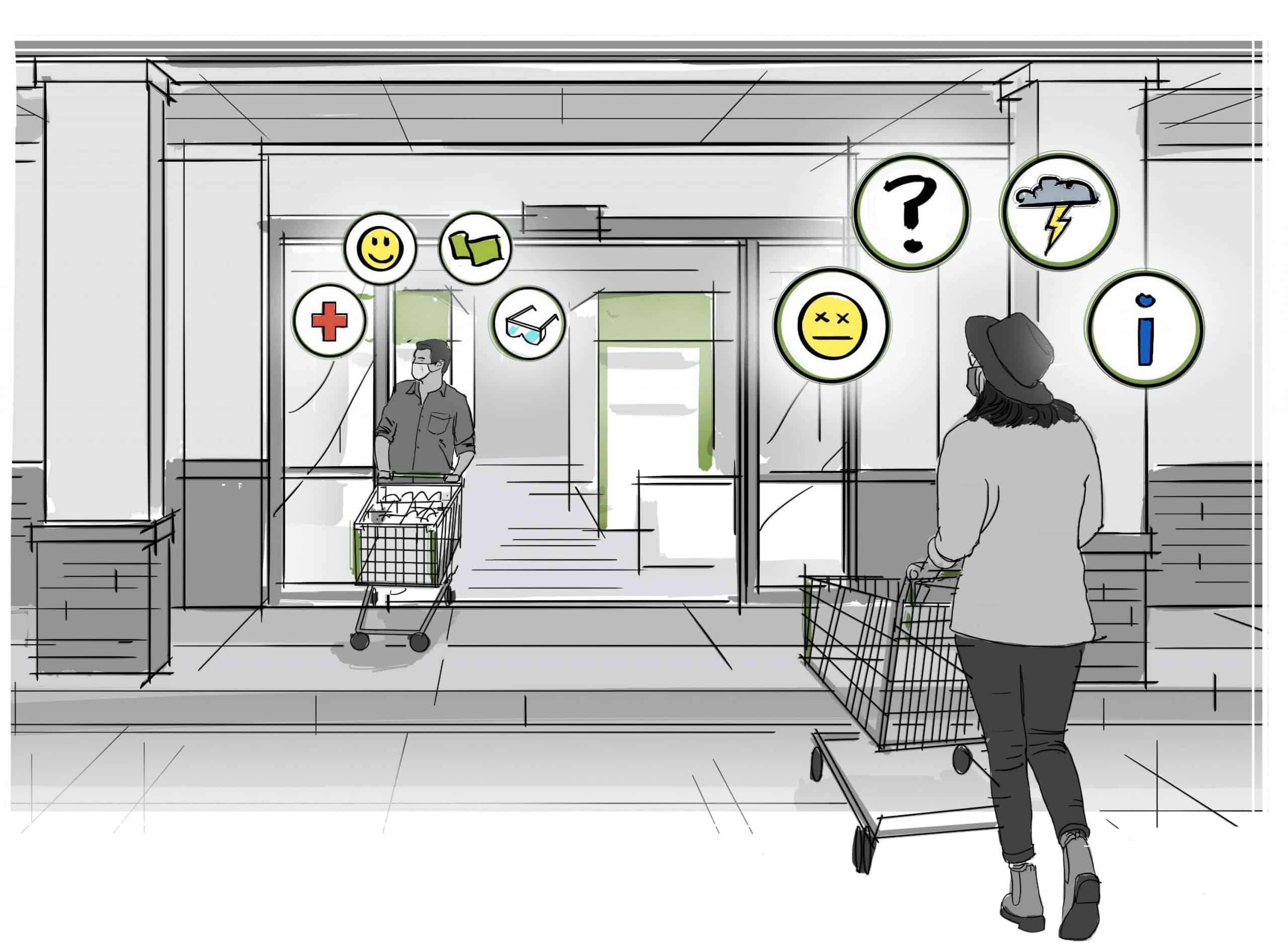
Behavior: One size does not fit all
Retailers must understand the traumatic changes customers are experiencing as they adopt new practices and cope with heighten states-of-mind. Stressed, confused, and often disoriented customers try to reconcile how to change a set of ingrained behaviors they have developed over decades.
A European study on behavior forming calculated that the average amount of time it takes to establish a new behavior is 66 days. We are well past that average. We must anticipate that some of these new behaviors and rituals will be adopted long-term. At Little, we believe behaviors that bring delight to customers, by either solving a functional need or enhancing an emotional connection, will be likely candidates for long-term adoption. So, if you are trying to determine what will stick, look for those cues.
At Little, we believe behaviors that bring delight to customers, by either solving a functional need or enhancing an emotional connection, will be likely candidates for long-term adoption.
Recommendations:
- Remember there is a wide range of emotions, anxieties and fears affecting your customers
- Consider the emotional extremes when developing ideas and solutions. Those will lead you to solutions for the most complex challenges.
- Let your customers know that shopping will now require more time so they can plan accordingly.
- Share the hours when your store is less crowded so customers can select the best time for them.
- Adopt new or enhance your customer engagement protocols, tone and basic messaging to help reduce anxiety (your employees need the same—more empathy).
- Make expectations clear when shopping the store and consider creating a more calming and relaxing environment with music, scents and an approachable tone of voice.
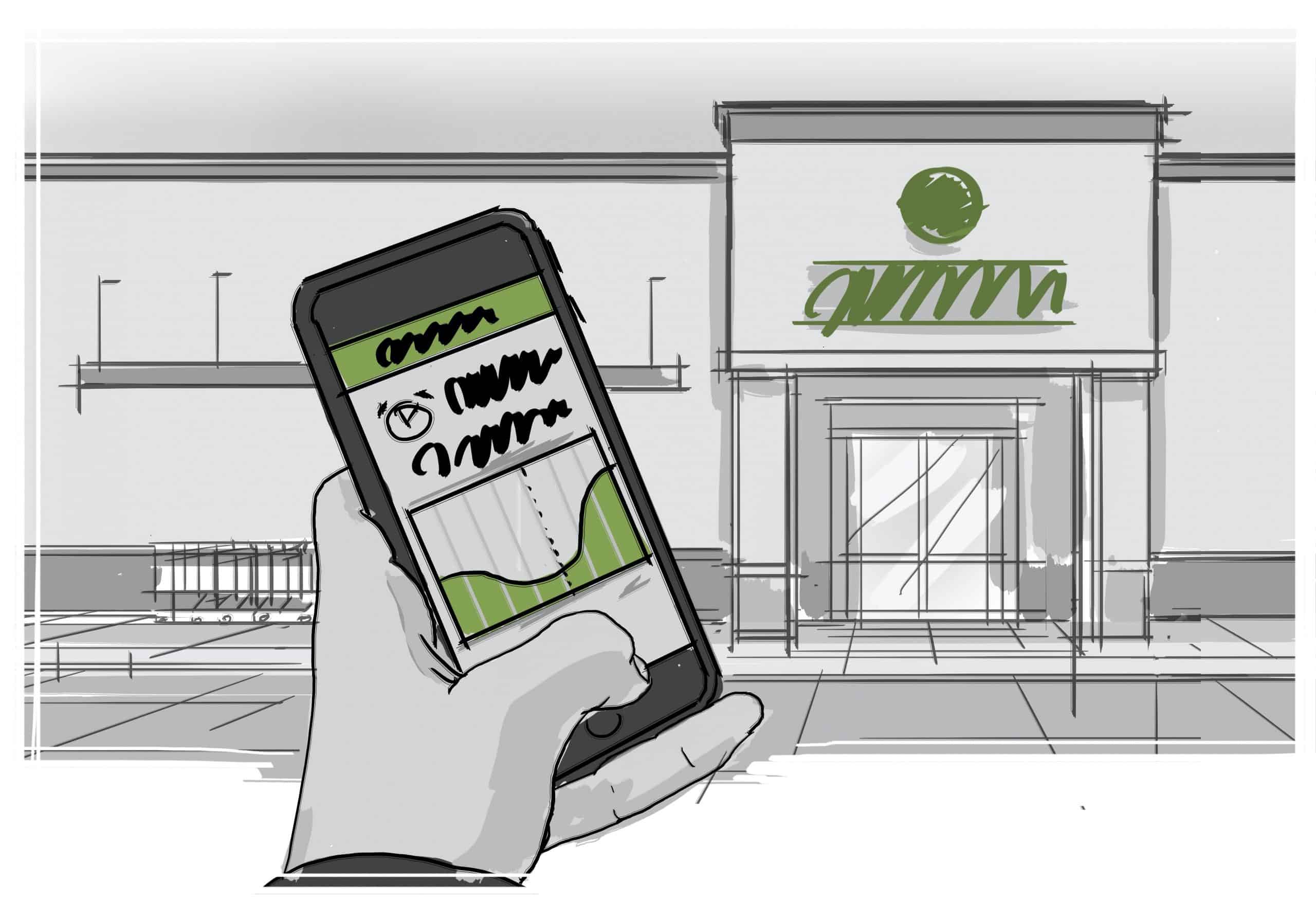
Communication: Clear expectations make it easier for all
Retailers must communicate expectations and protocols in advance of store visits. During my retail visits, I have seen much confusion in stores.
A small percentage of customers disregard or are unaware of the rules. Others are hyper-aware, militant about social distancing, and act as rogue enforcers. And then there’s the vast majority who are aware and trying their best to stay in the middle. Supermarkets should establish and enforce clear rules. This way all customers are clear on expectations, how to shop, and which rules to follow. Communication is key—before, during, and after the trip.
One regional store I visited implemented a well-branded pandemic signage system that, unfortunately, blended perfectly with its typical promotional and traditional signs. Branded is good. It’s certainly better than a generic template. However, it fails when it becomes invisible to the customer. I have also witnessed a lot of floor graphics and arrows that no one follows. Why? We don’t shop looking at the floor. We are scanning for products. It’s best to supplement floor signage arrows with eye-level signage.
Recommendations:
- Leverage your loyalty database and marketing channels to communicate safety measures, social distancing rules, revised engagement protocols and overall expectations in advance.
- Help customers adopt and understand new rules by implementing a “concierge” role at entry or along key customer touchpoints points.
- Deploy a signage system that is on-brand (yours) yet visible and noticeable to customers. Place signage, graphics, and visual aids in the sight of customers. Remember customers do not shop looking at the floor.
- Communication is not just signage – visual merchandising, music, scent and verbal communication between associates and customers can do a lot to reduce anxiety.
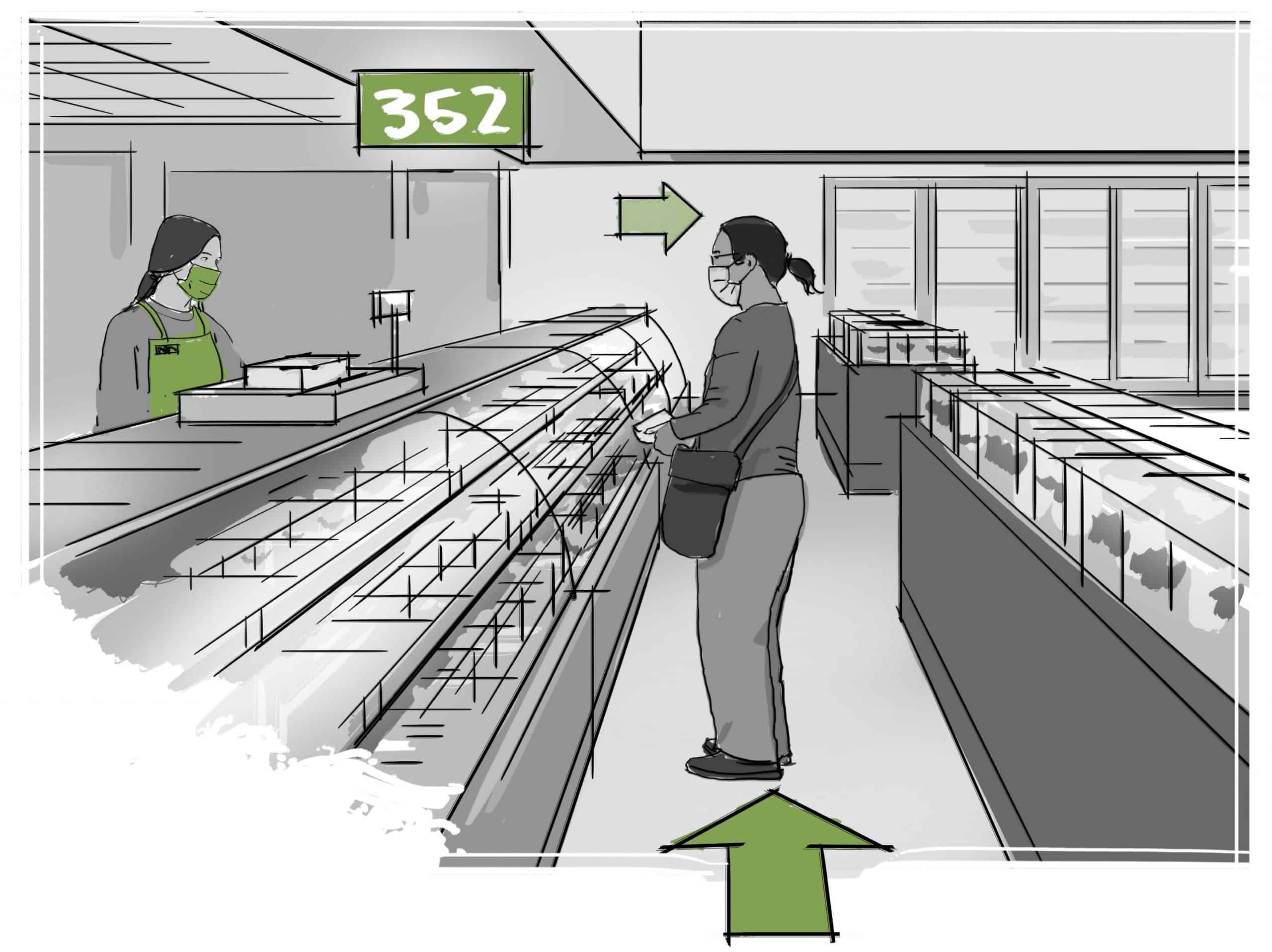
Environment: Leverage new rules to improve the customer journey
Psychologists have long supported the notion that environments can condition our behavior and alter our state-of-mind. I have shopped stores that contribute to a better experience and state-of-mind and others that do not. During one visit to a national chain, I experienced visual noise, clutter and overlap of pandemic communication mixed with standard promotional signage. This was on top of traditional visual merchandising vignettes. The experience was overwhelming and stressful. While on another visit to a regional store, I experienced the opposite. The new directional journey and queuing process for the deli/meat/seafood counter made shopping much more organized and efficient. The level of service and overall experience was much improved.
Recommendations:
- Mobile fixtures can help stores test circulation routes, change customer flow and merchandise along new internal queuing lanes.
- Consider how new circulation paths have changed key focal messaging/impression opportunities – think Ikea where, at every turn, there is a new message and merchandising opportunity.
- Simplify the shopping experience, visual merchandising and prioritize safety to allow for a simple and intuitive shopping trip. We already have a lot on our minds and anything to reduce anxiety is welcomed.
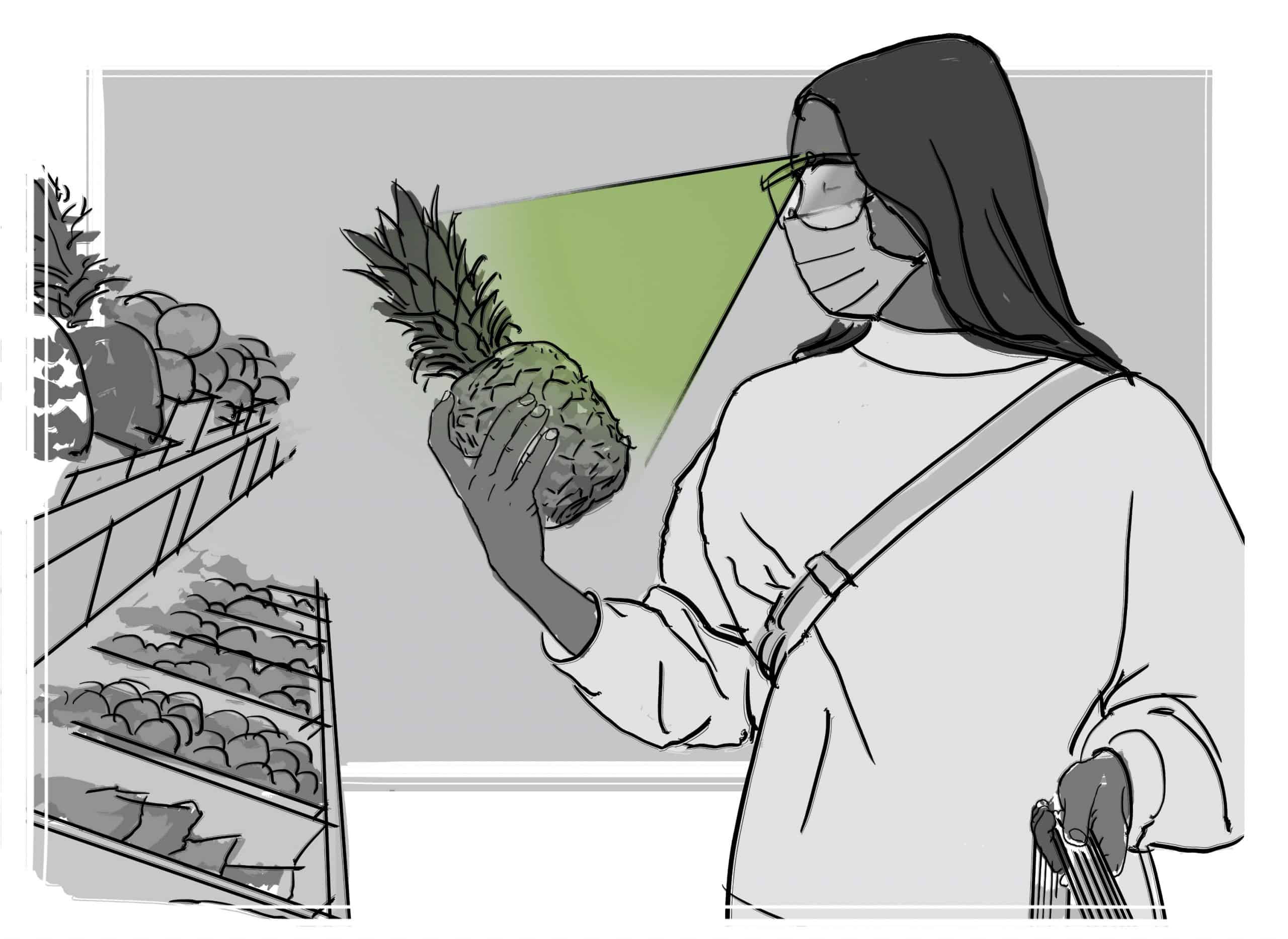
Technology: The great push for online and delivery
The pandemic’s sequestration has accelerated online shopping either via direct home delivery or store curbside pickup (BOPAS). Many customers have shopped groceries online for the first time. In contrast, others have expanded the practice to different (non-conventional) product categories and tested various delivery services. The technology side of online ordering has been consistent and relatively dependable.
Yes, there is room for improvement. However, the area that perhaps needs the most attention, as is often the case, is the human side. When ordering from a local store, a human (at least for now) collects the items on your order, sorts them and gets them ready for pick-up or delivery. It is here where the experience lacks—at least for me. Stock shortages mean item substitutions or left out altogether. The perishable side is even more troublesome. I have received melting tomatoes, blueish green lemons, and other lackluster produce, meat and even seafood during the pandemic. You can provide feedback on one delivery. However, the army of folks now working for Instacart, for example, means many repeat situations which can translate to a negative customer experience.
Despite a few areas where I see opportunities for improvement, I do remain optimistic and see this pandemic period as a “forced” test phase for grocery and delivery brands to improve and refine their infrastructure and operational practices to deliver on an exceptional customer experience.
Recommendations:
- The pre-pandemic low volume, in-store pick-up infrastructure and systems are overwhelmed with the pandemic volumes and should be temporarily expanded as new long-term systems are considered and evaluated. We can expect this online trend to stick; if so, then pick-up and delivery solutions must be reimagined, just as restaurants had to figure out how to manage and facilitate online orders and delivery services.
- Customers would benefit from better integration and collaboration between grocery providers and delivery companies like Shipt and Instacart.
- QA, QC standards, and industry practices should be established for those picking perishables and replacing out of stock items.
- Self-checkouts and other forms of reducing human interaction (contactless) during this last transactional step are already being implemented across the country.
- In Japan, customers can follow along during the virtual trip to advise personal shopper of selection choices and preferences, a version of that could also work here.
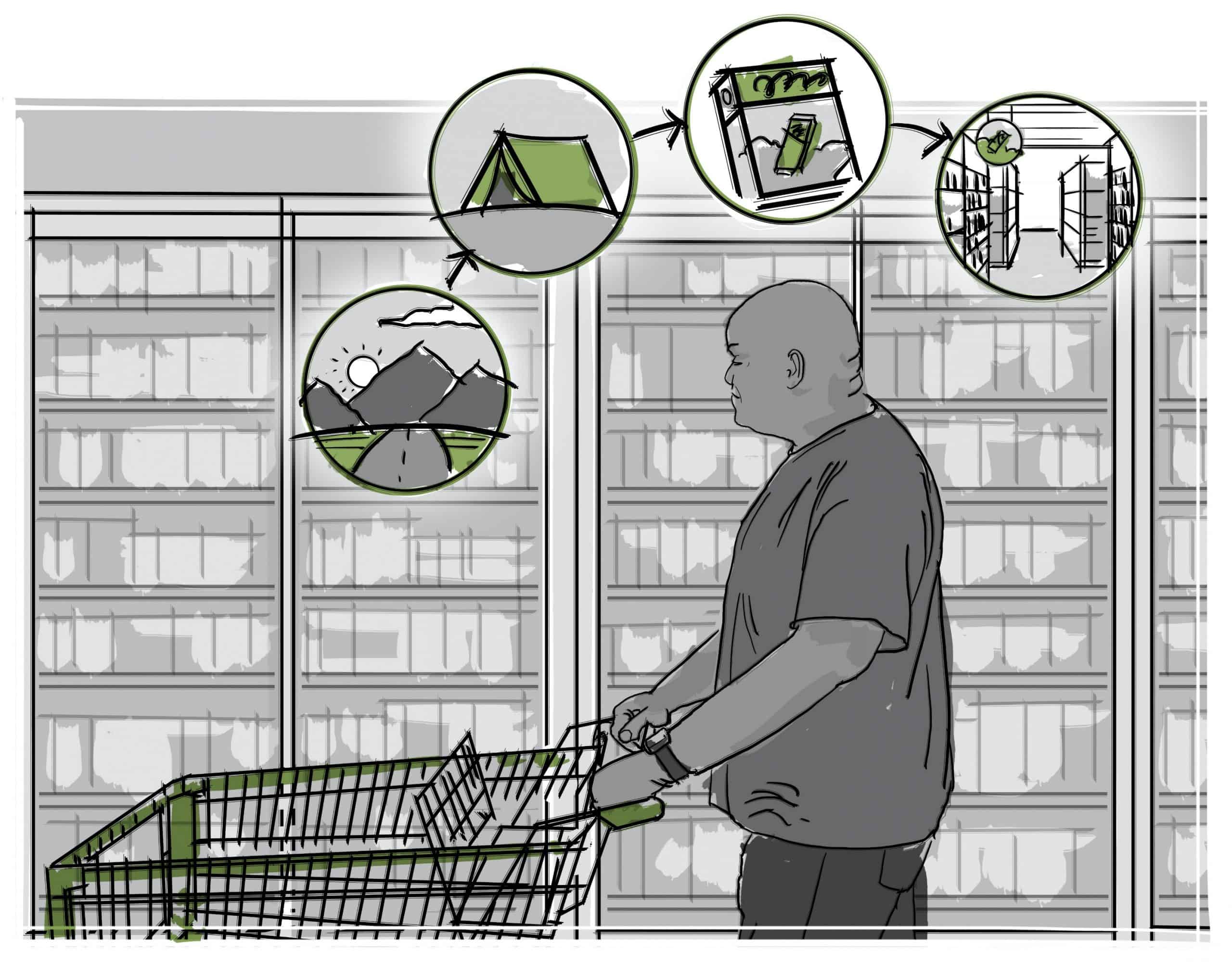
Sustainability: Time for introspection
Before the pandemic, the global wellness trend had been making waves across industries for years. The health stresses on customers that result from sequestration, isolation and now social conflict has only made wellness and well-being more relevant and visceral. Working from home means more control over our daily routines—at least for most, but also introduces more temptations and distractions.
With extra time and realigned purposes, there is a chance for self-reflection that could result in customers seeking solutions from local grocers that solve for a renewed interest in health, wellness and well-being, to improve their mind, body, spirit and soul. Supermarkets have a unique opportunity to provide products and services under the new normal that can solve these needs of customers. If not, others will continue to offer alternative options. Think of “Patagonia provisions”. It’s obvious that as other businesses feel pressured to expand and diversify, they continue to look at the food industry as a meaningful way to connect with customers.
Recommendations:
- Look for partnerships that provide a range of services and products to create a more holistic solution for wellness and well-being.
- Consider reward programs that promote good habits and encourage long-term adoption.
- Last-mile delivery solutions are going to be key for mid-size players’ success as they compete with large one-hour delivery giants. Several regional players are testing drones as a quicker and more sustainable delivery response.
- Continue to reassure customers that your organization is committed to safety during the pandemic and has not abandoned long-term sustainable objectives and goals.
With these five areas in mind, I look forward to this continued shopping evolution and how the design of the supermarket experience advances as a result.
